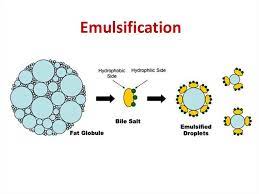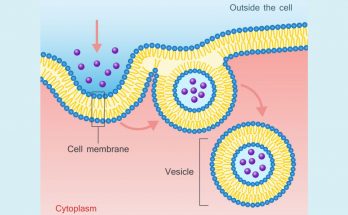
Emulsification of Fats
Emulsification of fats is an important process in digestion in which large globules of fat are broken down into smaller droplets. This process is carried out by bile, a substance produced by the liver and stored in the gallbladder. Bile emulsifies fats by acting as a detergent, breaking down the fat into smaller droplets that can be easily digested and absorbed by the body. Without this process, the digestion and absorption of fats would be much less efficient.
Emulsification of Fats Read More

